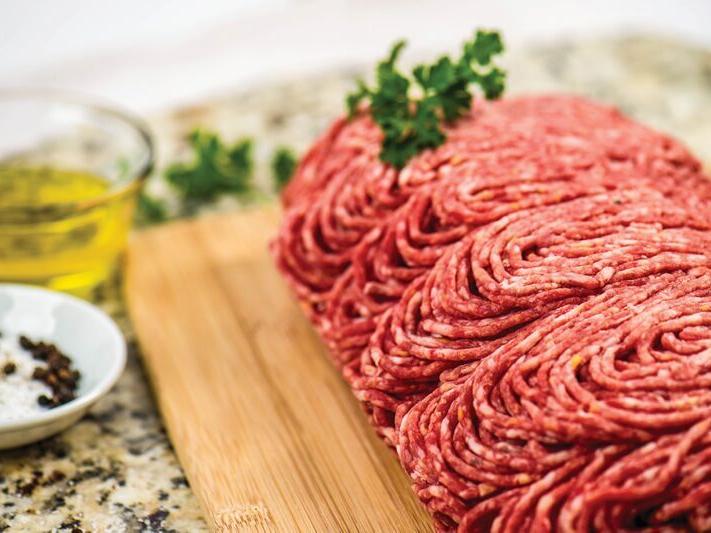
One question that remains on many people’s minds is what impact COVID-19 will have on holiday meat demand. Thanksgiving is just a few days away and several parts of the country are starting to issue new COVID-19 guidelines.
What impact will fewer and smaller social gatherings have on whole turkey demand? A relevant example for beef is prime rib demand and holiday parties.
Prime rib and ribeye steak cuts are from the rib primal. On average, the rib primal is the highest valued primal and prices tend to have seasonal peaks in June and November. The November peak in wholesale primal rib values corresponds to holiday demand for prime rib. Historically, monthly primal rib values range from 7.9 percent below annual averages in January to 8 percent above in November for the 2014-18 period.
Weekly choice primal rib values already have begun to approach their seasonal holiday peak. Last week saw a 6.2 percent week-over-week increase in choice rib primal values. However, prices remain below year-ago levels. Last week’s choice rib primal value was 2.1 percent below 2019 for the same week.
A closer look at wholesale boneless ribeye prices reveals prices have started to increase quite rapidly.
Historically, wholesale boneless ribeye prices are at their lowest in January, averaging $6.69/lb, and highest in November, averaging $8.68/lb. Last week, boneless ribeye prices increased 9.3 percent week-over-week, reaching $10.10/lb. Last week’s rib prices were also 4.6 percent above year-ago levels.
Before 2020, there have only been two other instances where wholesale ribeye prices were above $10/lb. Prices did average above $10/lb in June and early July of this year, but this was induced by the COVID-19 disruptions to wholesale beef markets.
It will be interesting to see what meat demand looks like this holiday season and beyond. Will we see a larger number of smaller holiday gatherings? This might suggest overall beef demand remains consistent with historical levels, but with substitution to smaller and potentially cheaper beef cuts. Cooking fatigue might also play a role this holiday season as consumers have been preparing more meals at home throughout the pandemic. After the thanksgiving holiday, a look at the data will give us further insights on what trends to expect for the remainder of 2020.
Information provided by USDA-AMS, Livestock Marketing Information Center in an article written by James Mitchell.
Ways to deter black vultures. Matt Springer, UK assistant extension professor of wildlife management, has provided the following info on black vultures, which are becoming a real problem statewide and here in Hardin County.
They are native to Kentucky and as a result, they are present here year-round, but you may be seeing more of them now for a few reasons. Their overall populations have increased in the state in the past couple of years. They also are a migratory species with a recently expanded range that stretches from Canada to South America, so you will see a lot more birds in Kentucky during the fall and winter as the birds from the northern range migrate south.
While they usually are carrion feeders, black vultures will attack and kill small- to medium-sized animals, including young livestock such as calves, piglets, goats and lambs. This is why they are a nemesis to many Kentucky farmers. Not to mention, black vultures can roost with as many as 100 other vultures, which can make them seem particularly menacing.
Their roosting can cause structural damage, because the birds have a bad habitat of picking at materials that have a rubbery texture. They have been known to damage pool covers, roof shingles, rubber roof liners, vent seals and window caulking.
Since black vultures are federally protected by the 1918 Migratory Bird Treaty Act, you cannot kill them or destroy their nests or eggs without a federal permit. Even if you do get a permit, these birds are extremely smart and very difficult to kill. However, it is legal to take steps to make the birds uncomfortable by making loud noises or spraying them with a garden hose.
It also is legal to use effigies to deter them from your property. Effigies are perhaps the easiest way to deter black vultures. When properly displayed, these depictions of dead vultures are extremely effective at getting these birds to move on their way. Effigies need to be hung high and upside down by their feet with their wings spread, so the vultures can see them from a distance.
Since many Kentucky livestock producers have animals that give birth during the fall and winter, putting the expectant mothers in one pasture and hanging an effigy in that area is very effective at keeping black vultures away from newborn livestock. For the most success, make sure the effigy can be seen from all angles and any location in a birthing pasture. You may need to hang more than one effigy to accomplish this.
Building your own effigy is easy and inexpensive, as you can reuse many items commonly found around your farm. Matt Springer and Jonathan Matthews from the University of Kentucky Department of Forestry and Natural Resources have developed a pattern and directions to make a black vulture effigy using a rubber stall mat that you can freely access and print online at forestry.ca.uky.edu/files/forfs18-03.pdf.The entire project costs less than $30 and takes about two hours to complete.
November 24, 2020 at 12:15PM
https://ift.tt/2KtvG1C
How the pandemic affects holiday beef demand | Business - Elizabethtown News Enterprise
https://ift.tt/2RxTDX4
Beef

No comments:
Post a Comment